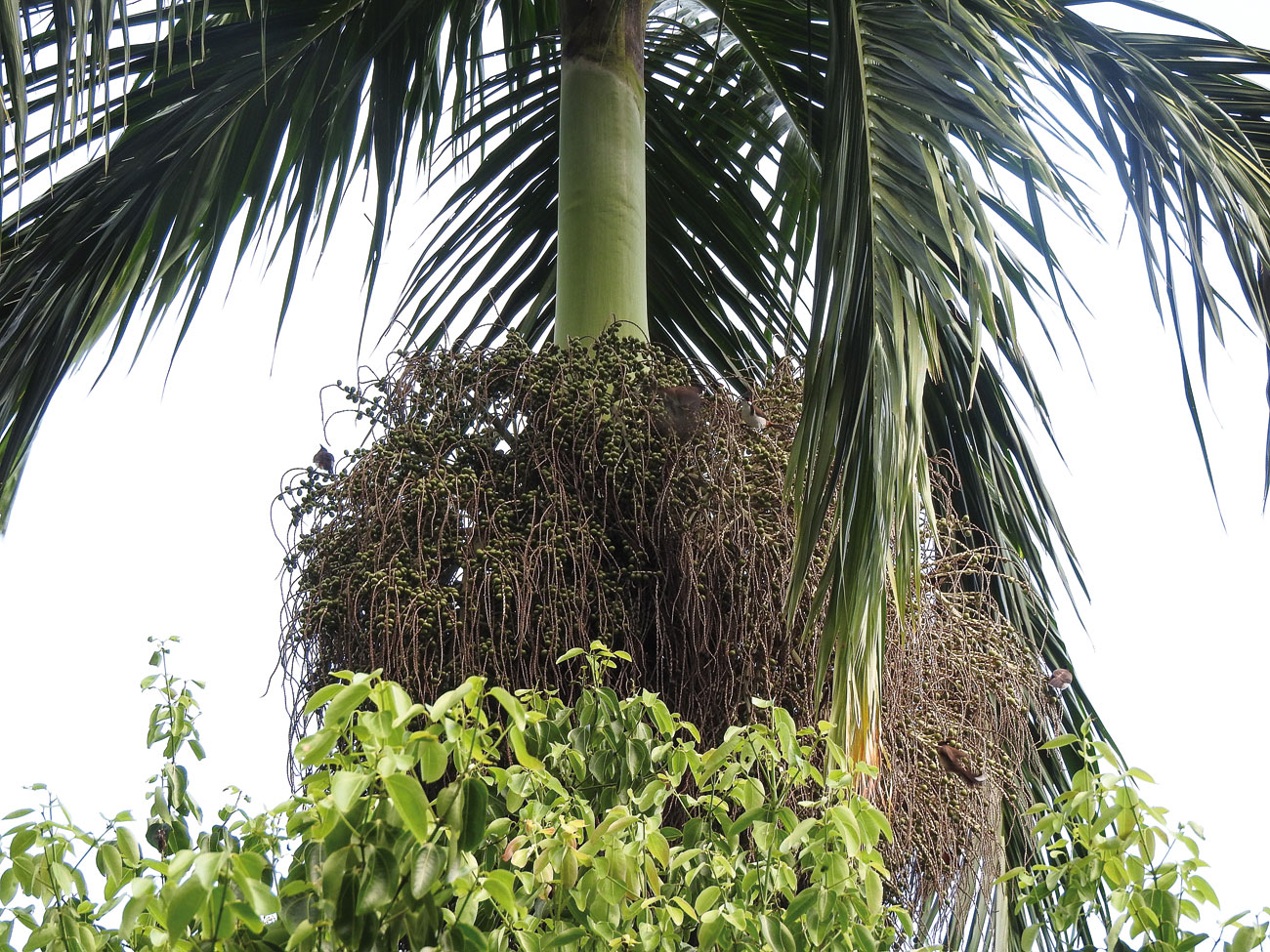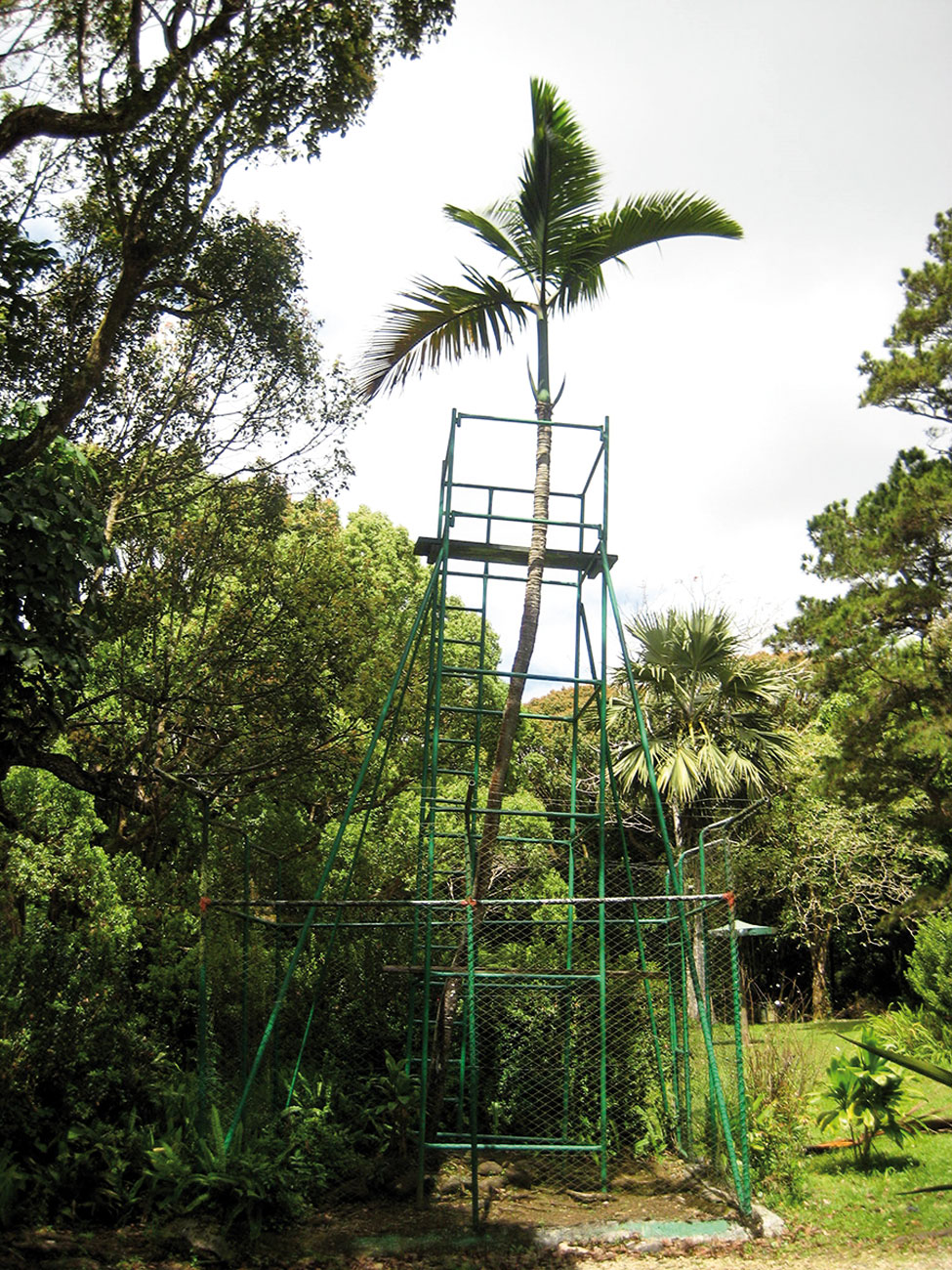The Imperiled Nicobar Palm
First published in Sanctuary Asia,
Vol. 43
No. 4,
April 2023
By Soham Kacker
Picture an island. What do you see? Chances are you imagined a warm climate, palm trees and pristine beaches. Palms, or members of the botanical family Arecaceae, have become representative of island ecosystems, and the Andaman and Nicobar Islands are no exception. The island group, formed around the same time as the Indonesian archipelago and by the same tectonic event that created the Himalaya, plays host to 33 species of palms, with 18 of them being endemic to the islands. One of these in particular, Bentinckia nicobarica or the Nicobar palm, is restricted to the Nicobar Islands and listed as Endangered by the IUCN Red List of species. Now, with the islands facing the pressures of climate change and increasing urban and infrastructural development, the Nicobar palm and other endemic species are at real threat of extinction. However, the case of the Nicobar palm is of special concern, since island extinctions are particularly harmful. First, we have to ask what makes island biodiversity so interesting?

The Nicobar palm Bentinckia nicobarica is an elegant palm tree with arching leaves and a greyish white trunk. It is restricted to the Nicobar Islands and listed as Endangered by the IUCN Red List of species. Photo: Public domain/Yercaud Elango.
The two forefathers of evolution – Charles Darwin and Alfred Russel Wallace – both struck upon their theories of evolution by natural selection while exploring archipelagos. Darwin famously noticed how finches in the Galapagos islands seemed to diversify into different forms on different islands, and Wallace noticed similar patterns with birds and butterflies in the Malay islands. Islands form a natural laboratory for evolution, because they are geographically isolated. This causes the preservation of small genetic variations in any species which makes it to the island, since they cannot breed with a mainland population. This process of genetic isolation and amplification accelerates speciation. This natural pattern is, in principle, why islands show such high rates of endemism – and the same goes for plants.
Palms, in particular, are quick to colonise islands. Several palms have edible or buoyant fruits and seeds, allowing them to disperse to islands more effectively. Their tough leaves and slender, flexible stems make them ideal to withstand harsh and exposed island conditions, and their ability to reproduce asexually (many palms form clonal clusters, or colonies) ensures they can establish a large population quickly. These traits have facilitated the speciation of palms into over 2,600 species, and have kept them a part of tropical ecosystems for 80 million years. Unfortunately, this high rate of endemism among this taxon means that many palms have a very limited geographical range, and face immediate threats of extinction.

This specimen of Mauritian bottle palm Hyophorbe amaricaulis from Curepipe Botanic Gardens in Mauritius is an “endling”, last known individual of its species. Photo: Public domain/Coolth/wikipedia.
Palms are vital to humans. They form one of the oldest crops, with records of date-palm cultivation in Egypt existing from almost 5,000 years ago. After grasses and beans, palms form the third most agriculturally important plant family in the world. In India, the coconut palm alone annually contributes 3.8 billion USD to the country’s economy. Aside from human uses, palms form vital habitat for animal biodiversity; help in stabilising soil and mitigating the effects of natural disasters; and serve as a model system to study biogeographic evolution. In the case of the Nicobar palm, it exists in increasingly smaller habitat fragments, and is critically under-studied in terms of its interactions with other plants and animals. Previously assessed by the IUCN 25 years ago, its current status of preservation is mostly unknown. On Mauritius, the endemic Mauritian bottle palm Hyophorbe amaricaulis is reduced to a single remaining specimen, the last representative of a population gradually whittled down by habitat loss. If immediate conservation action is not taken, the Nicobar palm and other unique species stand to face a similar unsettling fate. Such species serve as urgent reminders of the need to pay special conservation attention to islands, and recognise – in policy and in public dialogue – the unique evolutionary history and biodiversity they represent.
Further reading:
Eiserhardt, Wolf L., et al. ‘Geographical Ecology of the Palms (Arecaceae): Determinants of Diversity and Distributions across Spatial Scales.’ Annals of Botany, Vol. 108, No. 8, 2011, pp. 1391–1416., https://doi.org/10.1093/aob/mcr146.
Manohara, T. N., et al. ‘Diversity and Conservation of Palms in Andaman & Nicobar Archipelago.’ Biodiversity and Conservation, Vol. 19, No. 13, 2010, pp. 3655–3666., https://doi.org/10.1007/s10531-010-9918-6.
Soham Kacker is passionate about plants and has apprenticed at the Auroville Botanical Gardens and the Aravalli Biodiversity Park. Based in New Delhi, he is currently a research student at Ashoka University, focusing on plant ecology and conservation.



